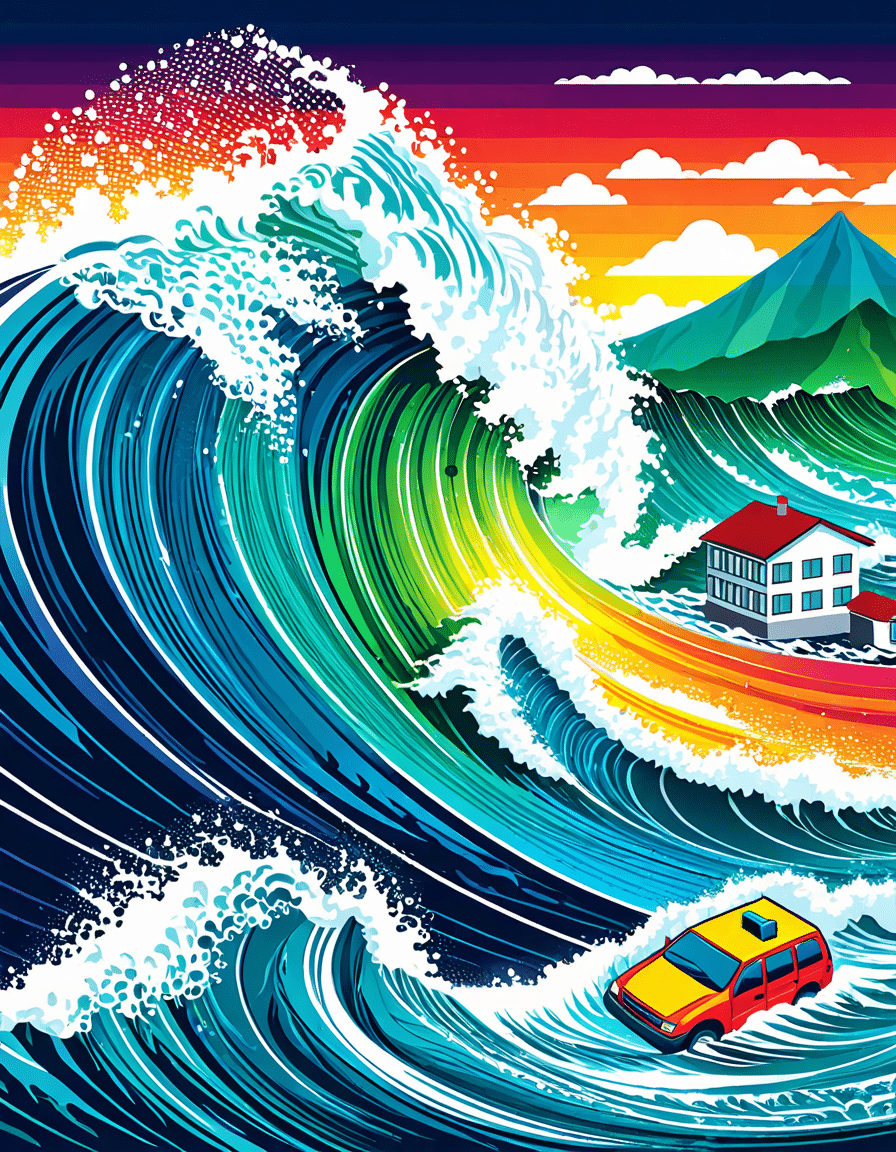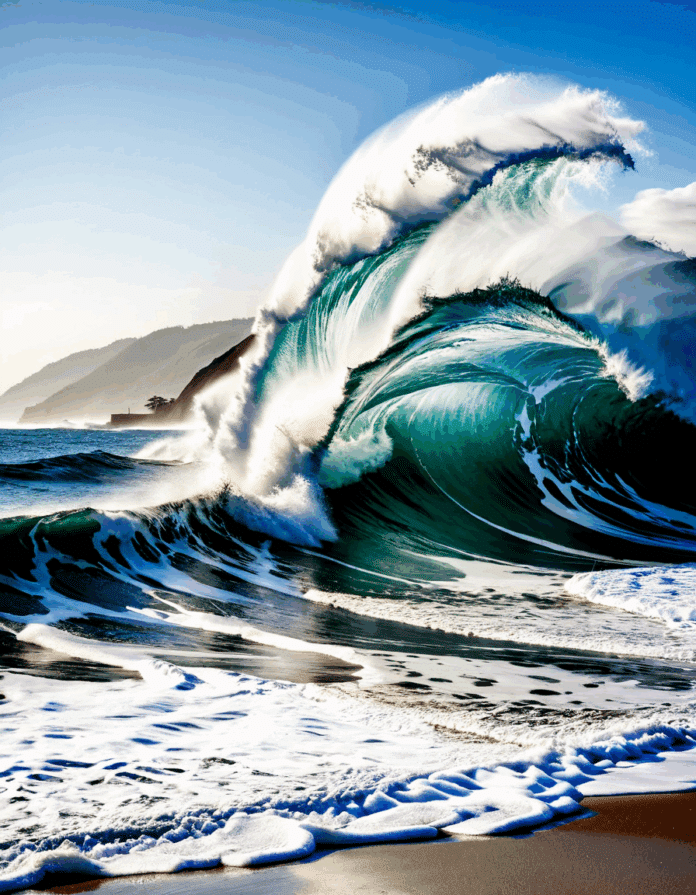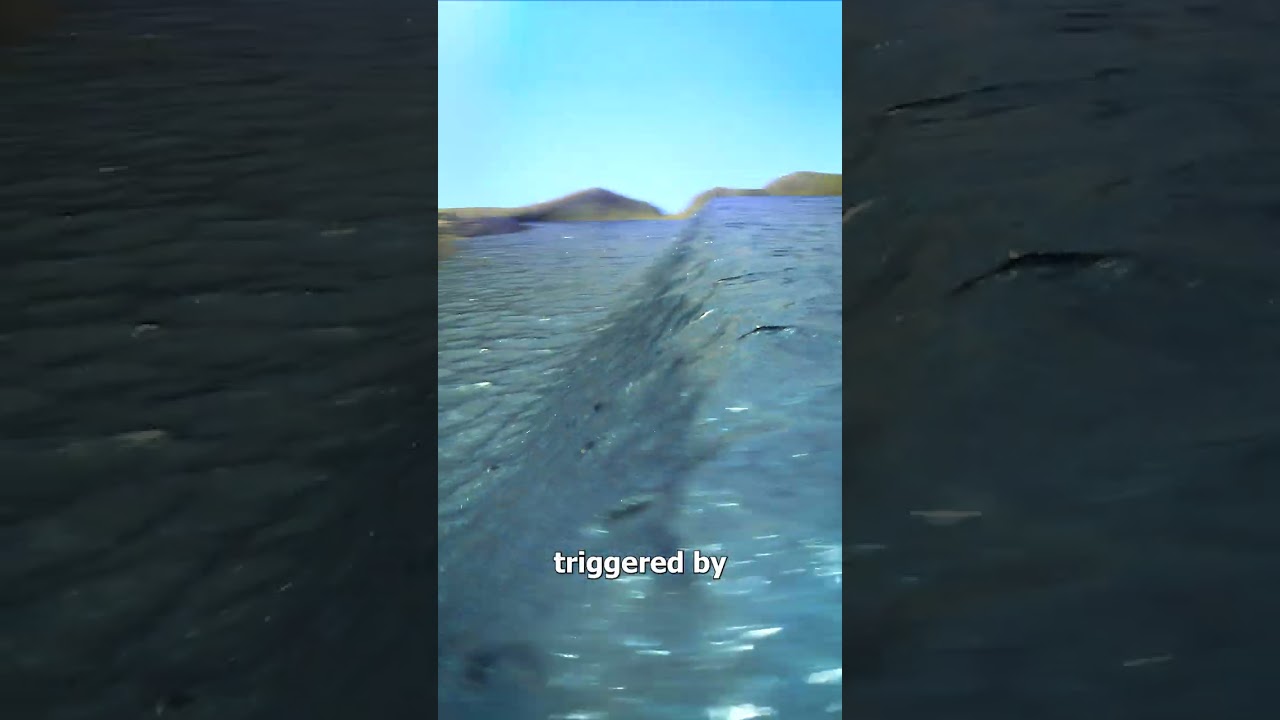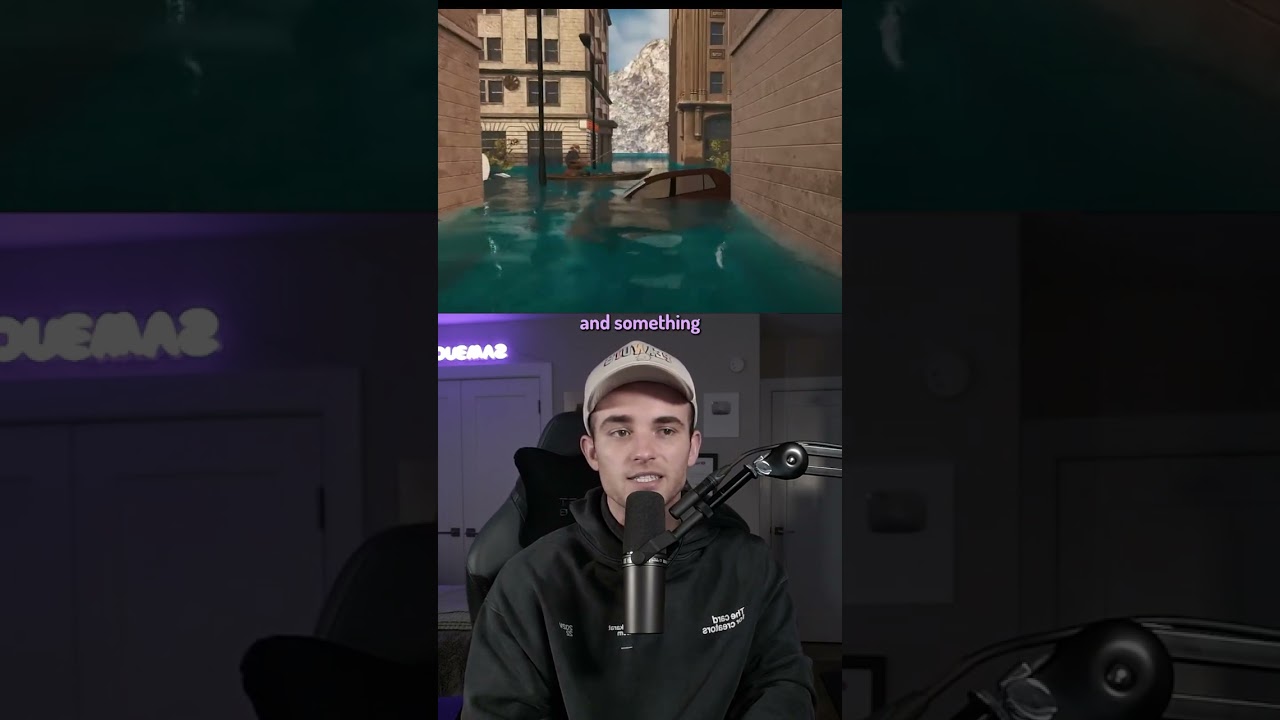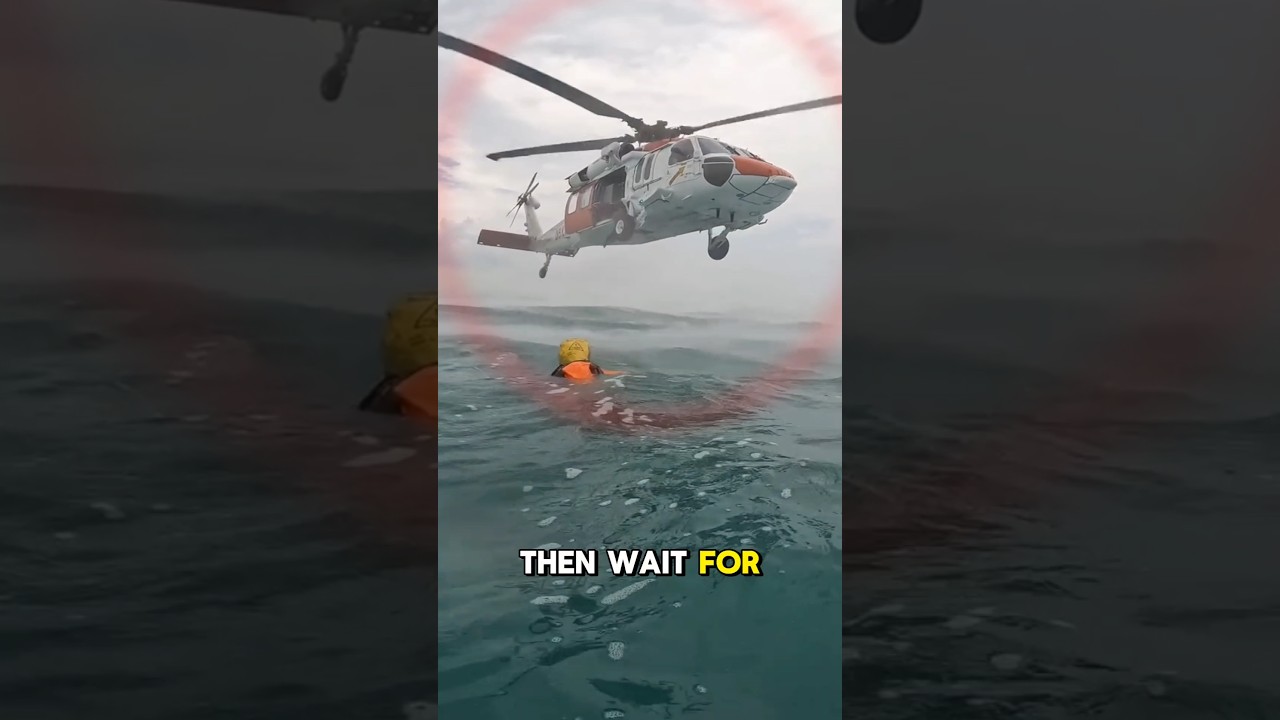Understanding Tsunami Dangers: Key Insights for Preparedness
Tsunamis, colossal waves fueled by underwater seismic activity, pose a significant threat to coastal communities worldwide. Understanding the risks associated with these natural disasters is crucial for effective preparedness. From geological shifts to climate change impacts, let’s dig into the complexities of tsunami dangers, ensuring that you’re equipped with the knowledge needed for safety.
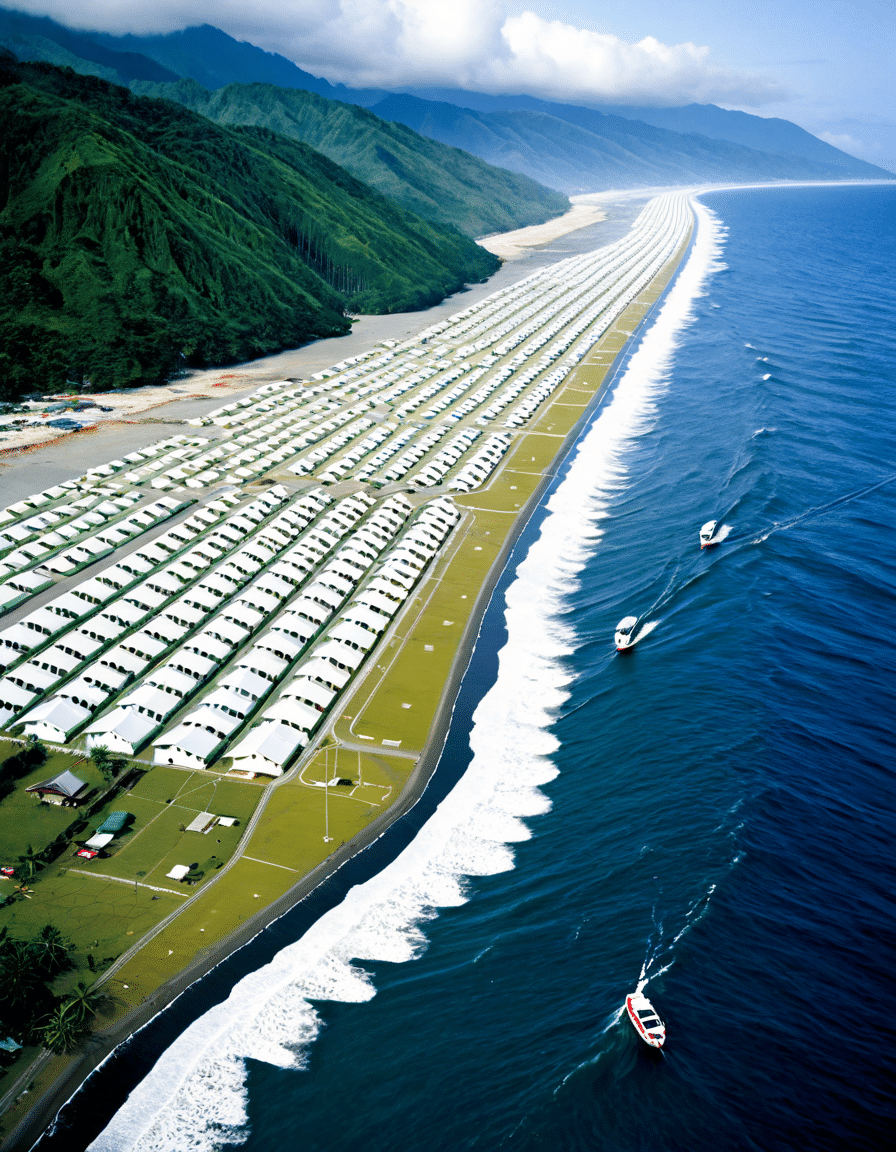
Top 7 Tsunami Risks: What You Must Be Aware Of
Tsunamis often originate from underwater earthquakes, particularly along tectonic plate boundaries. A staggering example is the 2004 Indian Ocean tsunami, triggered by a magnitude 9.1 quake off Sumatra. This event serves as a harsh lesson on how geological factors can unleash catastrophic waves that affect millions.
Coastal areas, especially those located near tectonically active regions, are particularly vulnerable to tsunami threats. Take Oregon, for instance, where towns like Newport and Lincoln City face significant risks from potential mega-thrust earthquakes. The rugged landscapes that make the Pacific Northwest attractive also make it a target for massive waves, emphasizing the need for local preparedness.
When you pack a lot of people into coastal zones, the tsunami risks only multiply. The 2011 Tōhoku tsunami in Japan impacted Sendai city, which had a high population density. In the aftermath, nearly 20,000 lives were lost, and countless homes were destroyed. This tragedy underscores how vulnerable crowded cities can be in the face of a tsunami crisis.
Rising sea levels, driven by climate change, threaten to magnify the impacts of future tsunamis. Recent studies from the National Oceanic and Atmospheric Administration (NOAA) have shown that inundation zones can double in size due to climate changes. This puts not just vulnerable areas at risk but increases the scope for devastating tsunamis that could emerge with little warning.
When disaster strikes, a timely and efficient emergency response can make all the difference. However, preparedness levels differ significantly from one state to another. For example, Hawaii boasts a strong tsunami warning system backed by regular drills, while other coastal areas may not have the same resources to ensure thorough evacuations. This disparity could lead to unnecessary loss of life, making a common-sense approach to preparedness imperative.
Despite the looming danger of tsunamis, public awareness remains strikingly low. Organizations like the Pacific Tsunami Warning Center work tirelessly to inform communities about risks and safety measures. Enhancing educational efforts focused on the dangers and preparedness strategies is vital in light of the potential for catastrophic events.
Technology plays a crucial role in predicting and responding to tsunamis. Advances like satellite-based detection systems, such as GPS, enhance our ability to forecast tsunami events. An illustration of this effectiveness was seen during the 2018 Indonesia earthquake and tsunami, where timely alerts helped save lives and mitigate potential chaos.
Tsunami Preparedness: Strategies for Coastal Communities
When it comes to tsunami preparedness, coastal communities need to get proactive. Developing a comprehensive response plan is essential to ensuring safety during disaster events.
Develop a Community Tsunami Response Plan
Local preparedness is key to minimizing tsunami damage. Agencies like FEMA provide resources for communities to develop tailored tsunami response plans. In California, for example, schools and communities conduct regular tsunami drills, promoting familiarity with evacuation routes and safety protocols among residents.
Invest in Early Warning Technology
Investment in early warning technology can save lives during tsunami threats. Japan’s advanced warning systems, which issue alerts via sirens and mobile notifications, exemplify best practices. The U.S. must follow this path, investing in similar technologies to ensure residents can quickly find higher ground during emergencies.
Create Tsunami Education Programs
Education is a powerful tool in crisis preparedness. Targeted programs across states can teach residents about tsunami signs, safety protocols, and evacuation routes. Massachusetts has launched educational initiatives in schools focusing on natural and man-made disasters, fostering community resilience and awareness among the younger population.

Integrating Tsunami Awareness with Other Health Risks: Influenza A and Indiana Fever
While tsunami preparedness is crucial, overlooking other health threats can undermine community resilience. In recent years, infectious diseases like influenza A and localized outbreaks, such as Indiana fever, have emerged as significant challenges. Including specific health strategies alongside tsunami preparedness plans can create a holistic approach to safety.
Fostering awareness about both natural disasters and health risks ensures communities are better prepared for unforeseen crises. By strengthening community networks, investing in technology, and prioritizing public education, we not only make our environments safer but also save lives in times of need.
Conclusion
Tsunamis remain a formidable threat, but informed communities can significantly mitigate risks. By understanding geological factors, enhancing public education, and investing in technology, coastal populations stand a better chance against the forces of nature. A comprehensive approach encompasses readiness for both tsunamis and health crises, transforming preparedness from a mere reaction into a proactive lifestyle across communities worldwide.
Tsunami Trivia: Waves of Wonder and Warning
The Spectacle of Tsunamis
Did you know that the fastest tsunami ever recorded reached a jaw-dropping speed of over 500 miles per hour? That’s quicker than a cheetah! These remarkable waves aren’t just one-hit wonders; they can travel across entire oceans without losing much energy. Just like the iconic Hocus Pocus 2 made waves in its release, tsunamis can create monumental impacts that resonate long after they’ve hit. To put that speed in perspective, if you were on the coast, you’d hear the rumble long before you saw the waves; they often arrive with little warning. Talk about a mantra for preparedness!
Tsunami Trivia from Around the Globe
Tsunamis can be triggered by various events, most commonly earthquakes, but did you know volcanic eruptions also play a role? Just as Flags Of The world represent diverse cultures, tsunamis can showcase the raw power of nature, affecting nations severely. In New Zealand, for instance, folks keep a close eye on their coastal areas, especially after seismic shifts, with their emergency plans sharper than a cricket rivalry like Nz Vs Pak. It’s vital to know how to respond when a tsunami warning is issued; every second counts!
Fun Facts to Keep You Engaged
If you think tsunamis are only about devastation, consider this: they can also create breathtaking landscapes—we’re talking about the beautiful, serene coastline evolving after such events. While it’s easy to get lost in the chaos, remember that understanding tsunamis can be quite enlightening, much like watching Shrek 4, where deeper messages lie beneath the comedic surface. Moreover, not only do tsunamis shape coastal geography, but they also remind us of our responsibility to respect nature. So, bolster your survival skills, and prepare like you would for an adventure akin to Bad Vs Wild, where knowing the terrain could be a lifesaver.
By staying informed, we become more equipped to handle the unexpected waves life throws our way, from natural disasters to navigating the funny complexities of life—like figuring out What Is alimony after a tough breakup! Whether you’re prepping for a tsunami or just looking for a fun fact to share at a party, knowing these tidbits keeps us grounded and ready.
